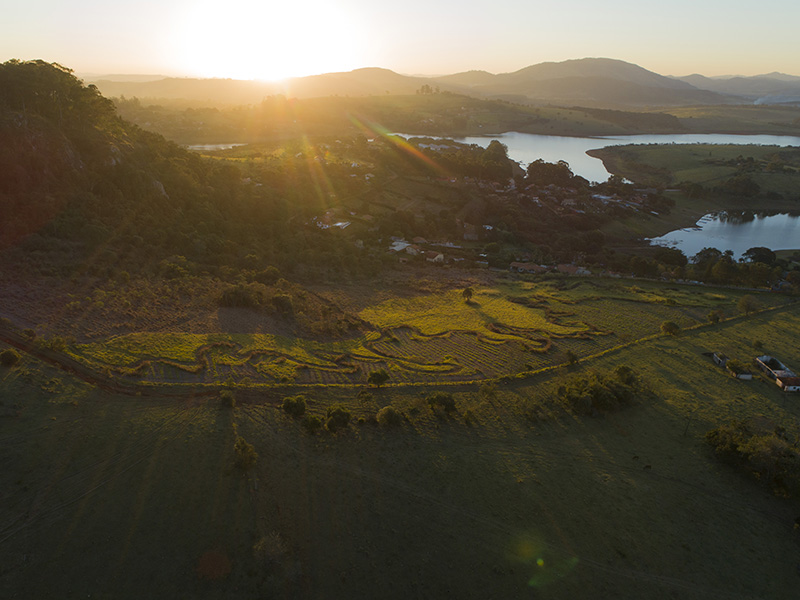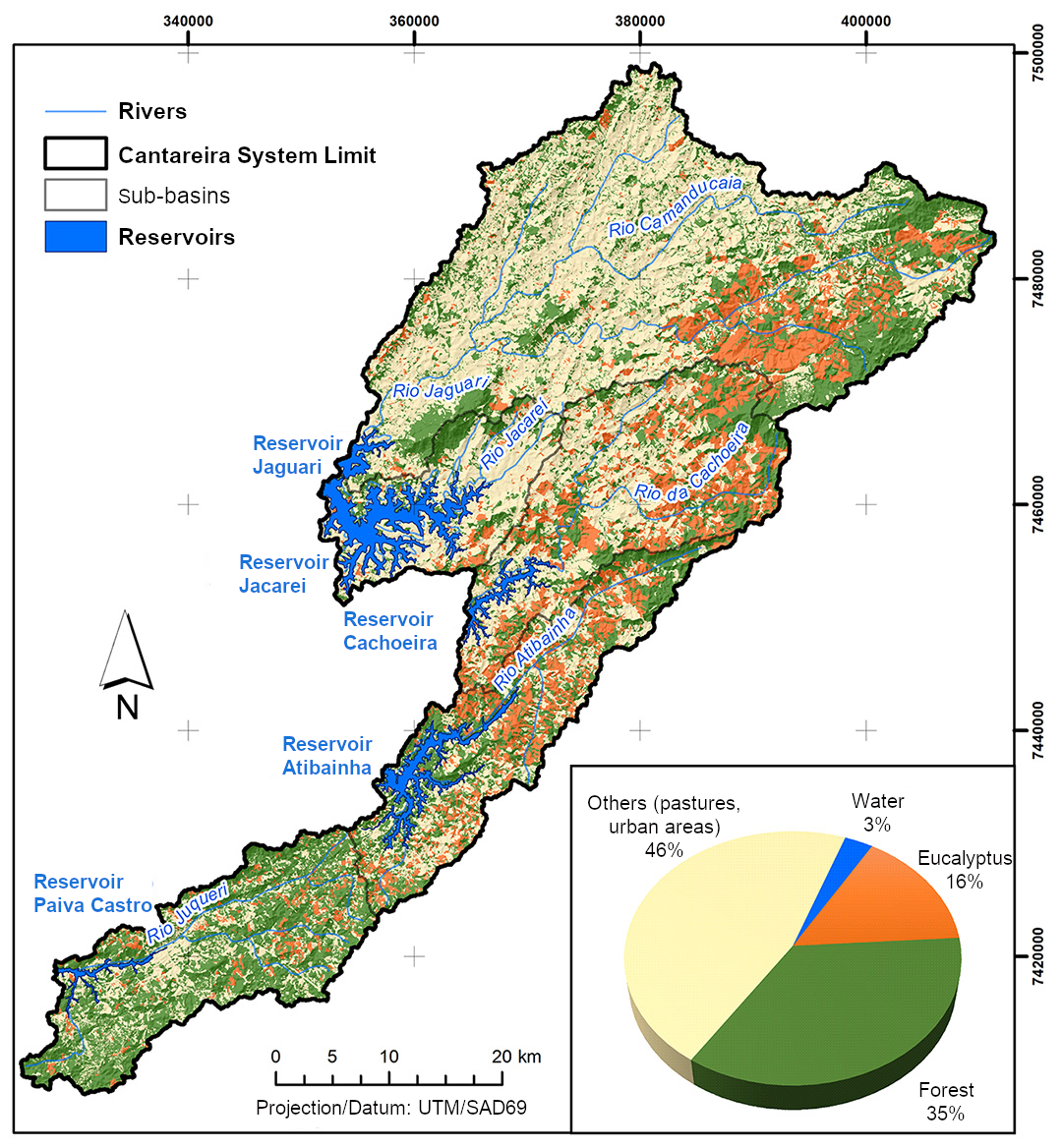
Water is the result of a series of actions. Knowing about the conservation in the Cantareira region and the solutions found for its longevity is crucial to understanding how the water gets to the tap
Improving land usage in the Cantareira System region, for instance, is strategic for rural producers, local communities, and for the population of large centers and companies supplied by the water that comes from there. Therefore, it is one of the Sowing Water Project’s focuses of action.
Here, you can see the current panorama of the Cantareira System and the advances made to solve its main challenges.
A panorama of the Cantareira region
-
- Pastures with degraded soil occupy 46% of the Cantareira System causing impairment to the infiltration of rainwater into the land and, consequently, affecting the System supply.
- Close to springs and rivers, 60% of the area needs reforestation. Namely, it means planting 35 million trees in an area of 21 mil hectares (the equivalent of 21 thousand football fields).
- The consequences of this scenario go beyond the gates of rural properties: they influence the quality and quantity of water that reaches the Cantareira System.
- Low yields characterize rural production due to soil degradation. The average income per household is below the minimum wage (data from IBGE/2010).
- Five years before the water crisis, in 2010, the Cantareira System was at 99% of capacity. In 2015, it was -24%, which reveals the low resistance of the System to drier periods.
- • Despite receiving contributions from the Paraíba do Sul River Basin and the São Lourenço System, since the water crisis began, the Cantareira System has remained in a capacity range between 40% and 60%, a situation that requires a state of attention.
Progress achieved by the Sowing Water Project
- The Project has planted more than 144 thousand trees in the Cantareira System. A reforestation of more than 72 hectares in the surroundings to springs, rivers, and reservoirs. These are called Permanent Protection Areas.
- 324 rural producers and technicians trained in Sustainable Production practices.
- 2.467 students and teachers students and teachers participated in environmental education activities in 6 climate schools.
- Transformation of 110 hectares from conventional to ecological pasture.
- 17 demonstration units and actions implemented on 47 rural properties.
- In addition to the social, economic and environmental benefits, these areas also serve to inspire other rural producers to replicate the model on their properties.
- Producers who invested in the Project’s actions increased the production and infiltration of rainwater into the soil.
The Sowing Water Project works to gain scale and bring benefits to more producers. In this way, it also contributes to increased water security for those who depend on water from the Cantareira System.

Land use map (2011) in the Cantareira System shows the degradation of the land around the reservoirs.
Map from Uezu et al. 2017

